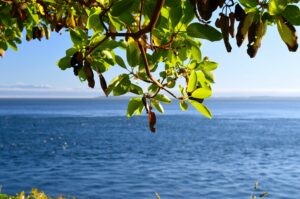“Evergreen State” is Washington State’s apt nickname. If you have been to the Pacific Northwest you know that it refers to the abundance of evergreen trees growing all over the state.
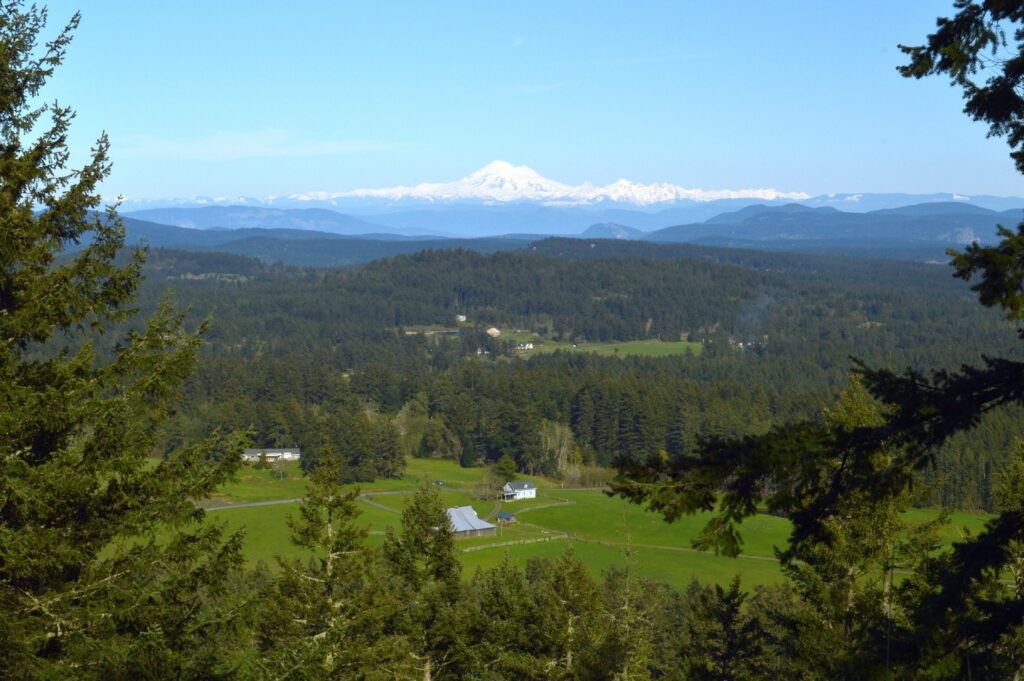
Define “evergreen”
Most evergreen trees are conifers and have needles. In other words, they stay green all year round. Think Douglas firs, western red cedar, Sitka spruce, western hemlock and shore pine. But the Pacific madrone is very different. A signature evergreen tree with broad green leaves and bright red flaky bark, the Pacific madrone tree (Arbutus menziesii) thrives from British Columbia all the way down to Central California. It is also known as madrone, madrona, bearberry and in Canada, arbutus. This evergreen tree is a common and very beloved sight here in the San Juan Islands!
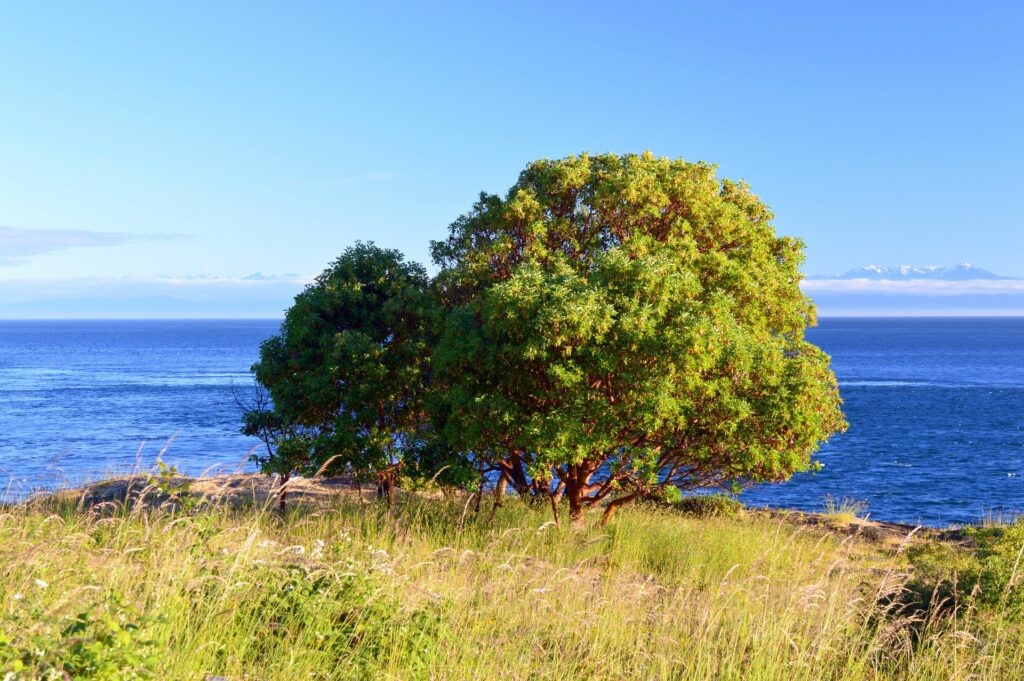
Behold the Pacifice madrone
Madrones grow 33 to 82 feet high and more often than not cling to coastal cliffs and hills. They have distinctive orange-red flaky bark and waxy green foliage. The tree trunk is a greenish silver and satiny smooth underneath the flaking bark. Madrones do very well in dry and rocky sites, the poorer the soil conditions the better. They do not tolerate shade and in their quest for light bend and twist, creating unique almost sculpture-like trunks and limbs.
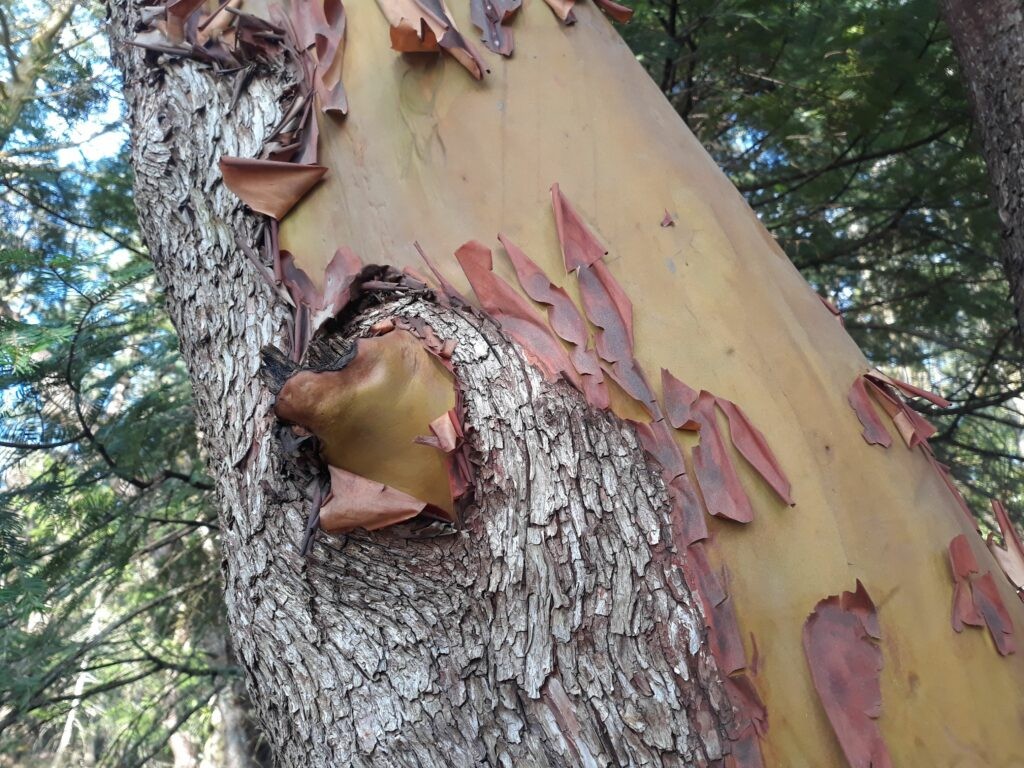
Springtime brings white and fragrant bell-like flowers which ripen into red berries in autumn. When the berries dry up, they have hooked barbs to latch on to larger animals and hitch a ride! The berries are edible, although rather tasteless and a variety of animals love to eat them. The Coast Salish people also used to eat them raw, cooked or dried. They also used the bark and leaves to make topical solutions and tea to treat anything from wounds, sores, colds to stomach problems.
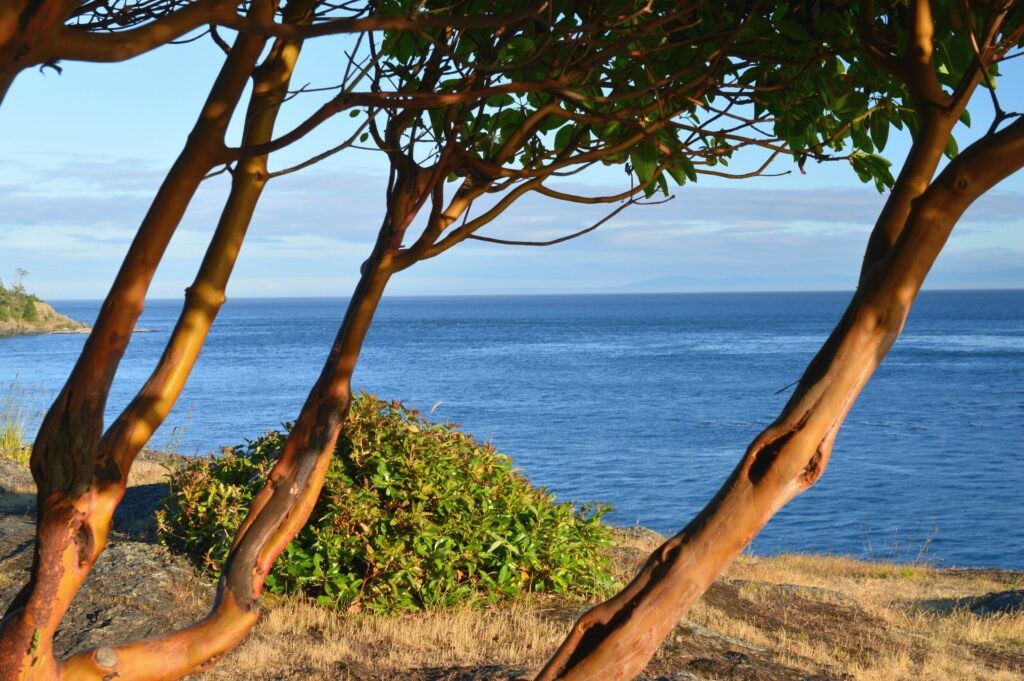
The hard wood is not suitable for building homes, as it warps easily when it dries and it doesn’t grow straight. Therefore, its value lies in firewood, as it burns long and hot. Madrone wood is often used to make unique pieces of furniture, art work and smaller items, like buttons. Once you have seen a specimen of this special tree, you won’t likely forget it. No wonder many local will choose it as their favorite tree!
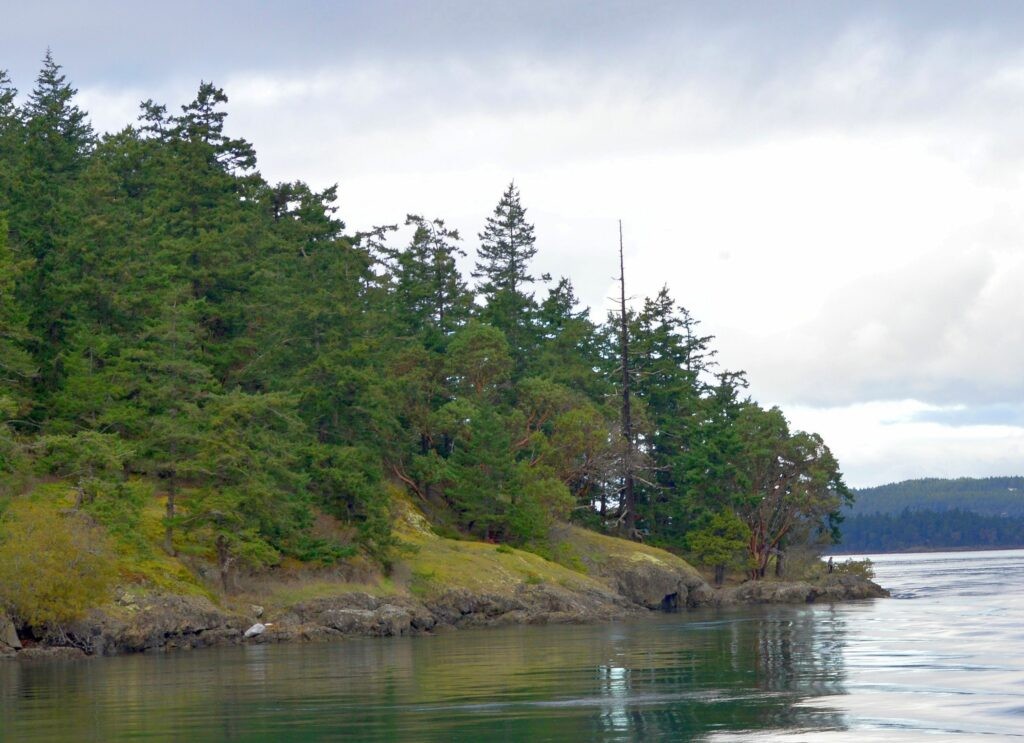
All photos taken on San Juan Island by Carmen Wolflisberg.

